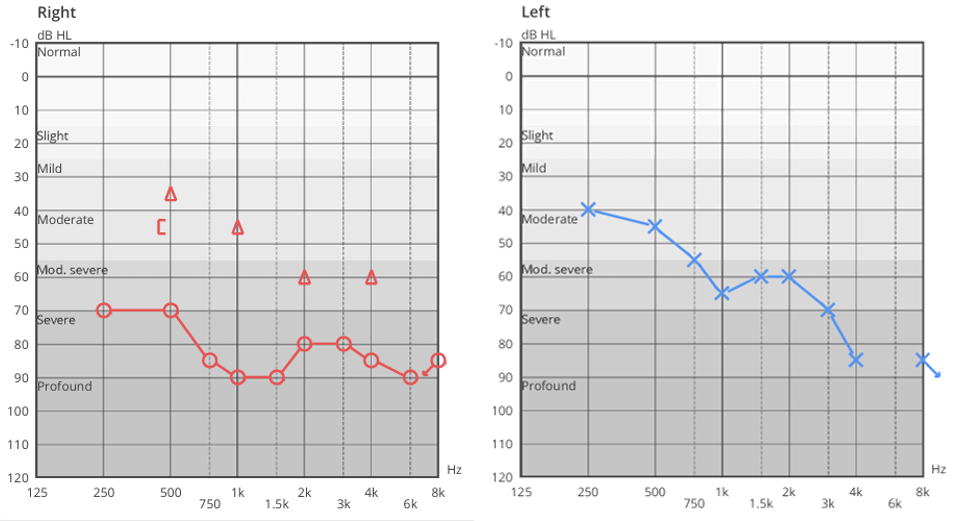
Is it time for an earwax removal appointment?
We produce earwax naturally to collect and trap dirt and bacteria in our ears. Removing it isn’t necessary unless you
To put it simply, an audiogram can be used by all hearing healthcare professionals to understand an individual’s hearing loss. It is a visual representation of the results of a hearing test. The hearing loss can be interpreted by hearing care professionals as the audiogram shows the softest level that the individual can hear at different frequencies.

As you can see, hearing loss is shown on the audiogram in a graph format. The horizontal axis shows the frequency. Frequency just means the pitch of the sound that is heard. The low pitch sounds are on the left and the highest pitch sounds are all the way at the other end of the axis on the right.
The vertical axis shows the softest (or quietest) level sound at the top with the loudest level sound at the bottom of the vertical axis. When each axis meets, it shows what level you can hear at each specific frequency.
The right and left ears are tested separately. Sometimes they are shown on one graph with 2 lines but as you can see, we use 2 graphs: 1 for each ear. The right ear is always represented with a red o and the left with a blue x.
The severity of hearing loss is diagnosed on a degree scale ranging from mild to profound. The scale is as follows:
This is the most common type of hearing loss. This type of hearing loss is generally caused by age, genetics or loud noise exposure over a period of time. Sensorineural hearing loss can be managed by wearing hearing aids.

This type of hearing loss occurs when sound cannot get through the outer and middle ear to the cochlear. There are lots of different reasons why this might be the case and you will usually be referred to a specialist (an ENT) for further investigation into your specific cause. Once the cause of the hearing loss has been established, the ENT will investigate all treatment options for you and may also prescribe hearing aids.
As you may have guessed from the name, this type of hearing loss is a mixture of both sensorineural and conductive hearing loss. This means there is damage to both the outer / middle ear and the inner ear. You may also be referred to an ENT if you have this type of hearing loss. Hearing aids may be prescribed to treat the sensorineural element of the hearing loss.
We think it is important to understand how we are testing your hearing and how we will determine if there is a hearing loss. If you have any further questions on hearing tests or audiogram results in general, please get in touch. You can book in for a hearing consultation with us easily via our website.

We produce earwax naturally to collect and trap dirt and bacteria in our ears. Removing it isn’t necessary unless you

We often talk about hearing loss, but have you ever stopped and thought about how we actually hear things?

December 31st is a huge night for celebrating right around the world. One of the main features of these celebrations